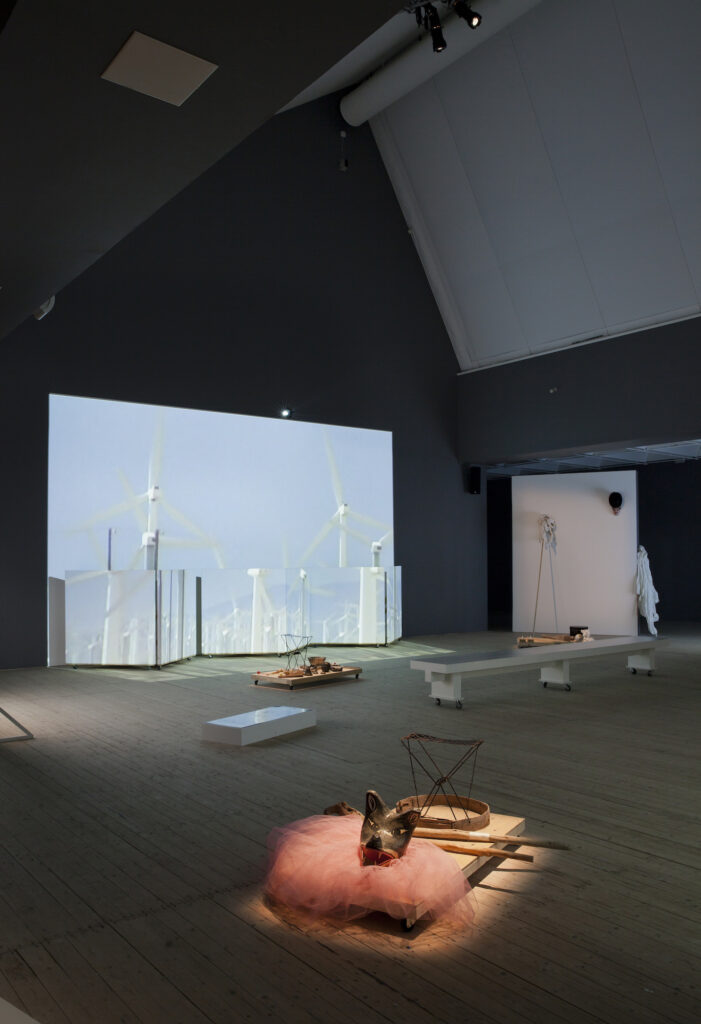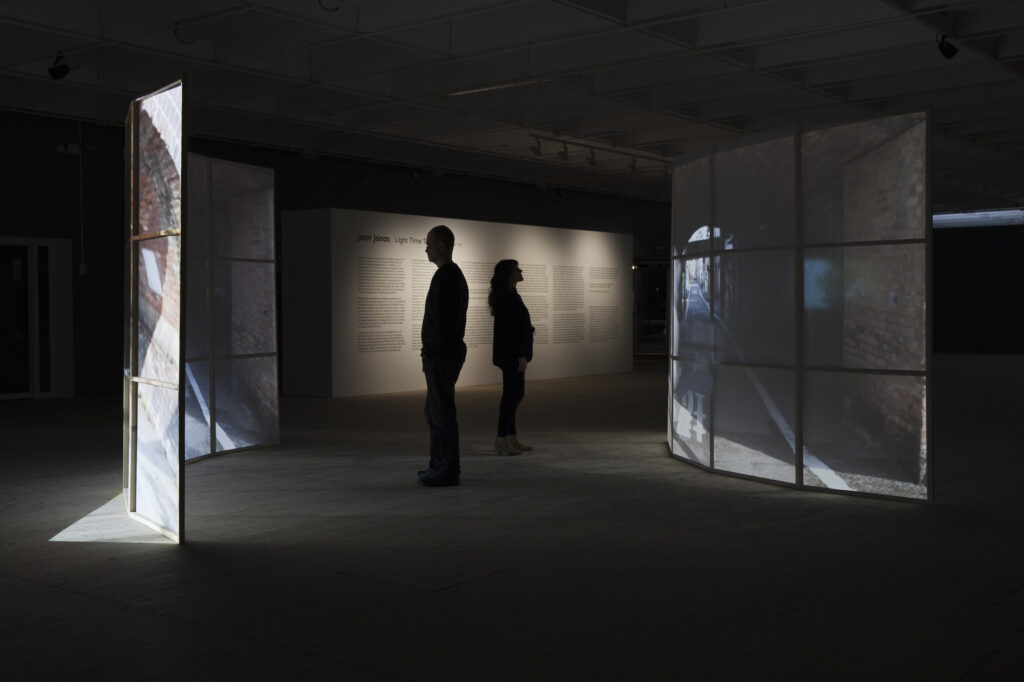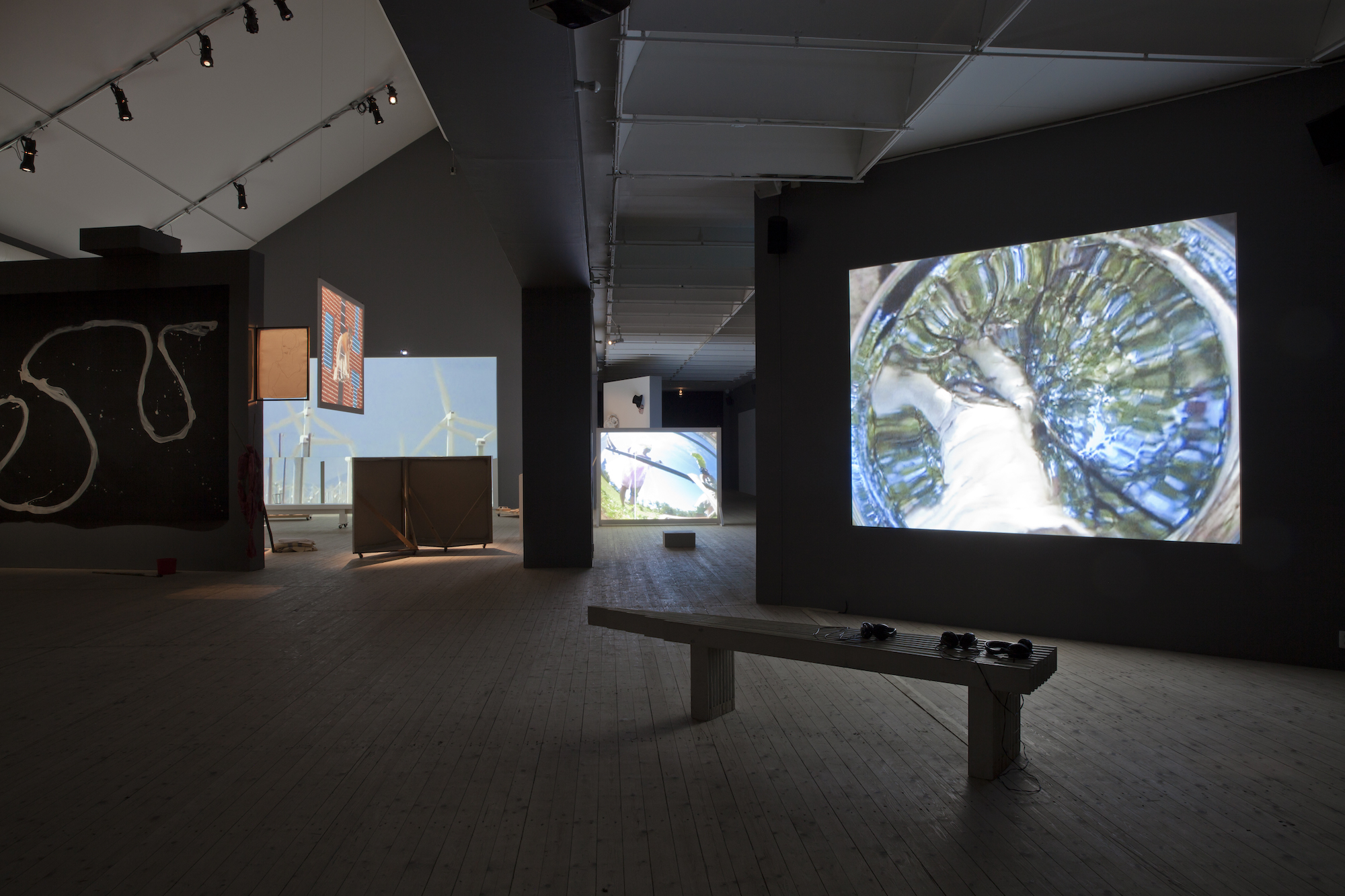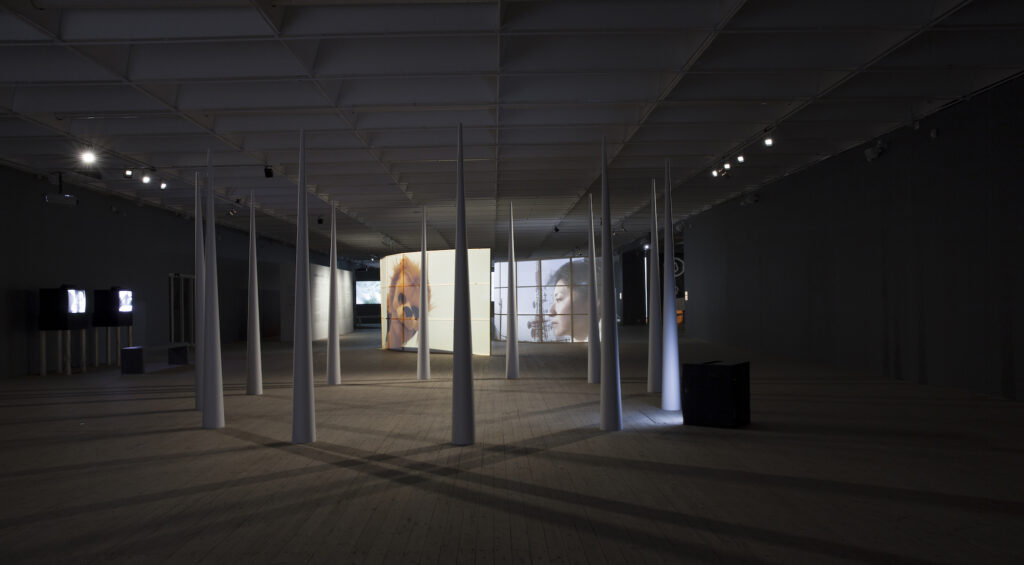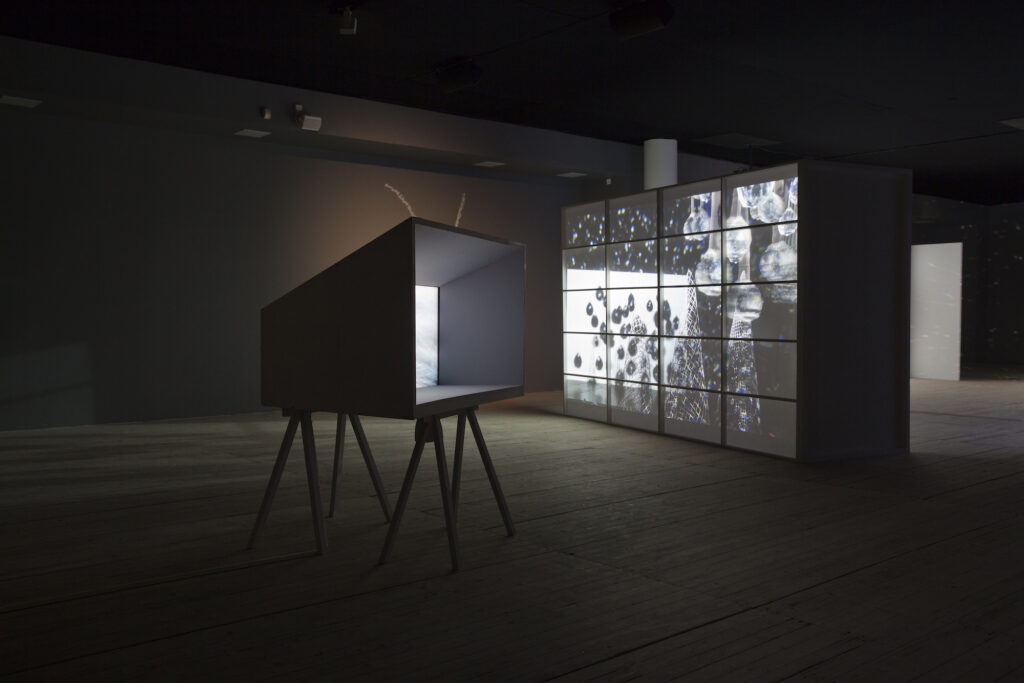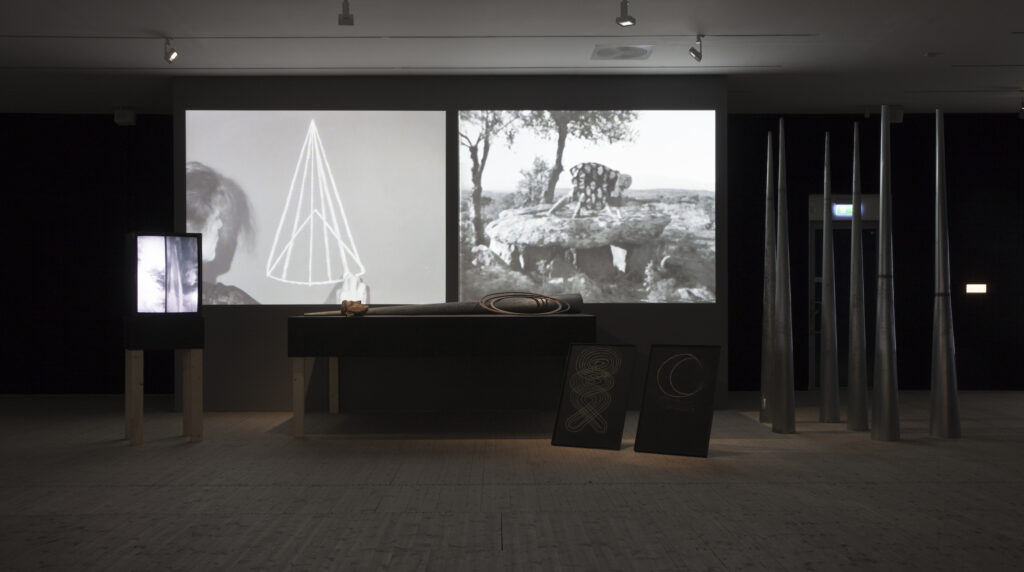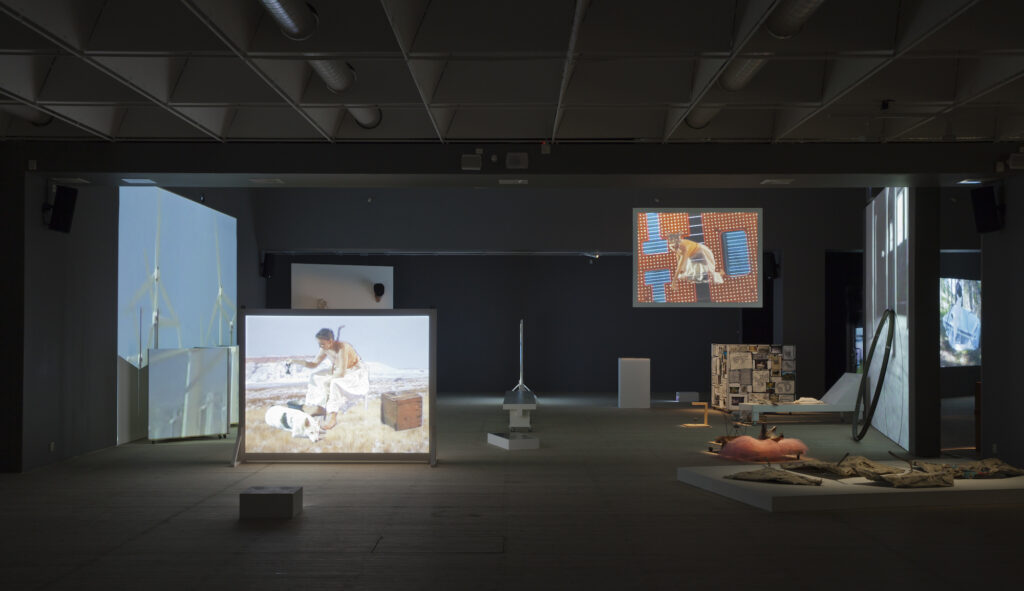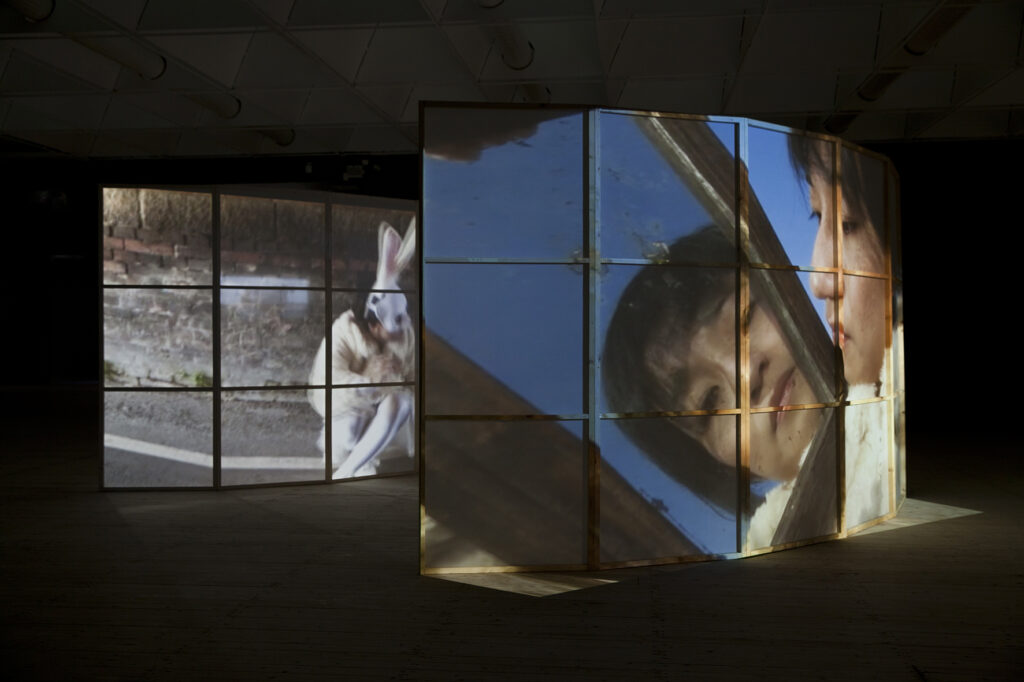
Joan Jonas – Light Time Tales
26.9 2015-10.1 2016
Joan Jonas has been one of the most influential artists in performance, video, and multimedia for more than six decades. Her works move freely between myth and reality, where body, image, and narrative intertwine to create dense poetic worlds. She is one of the pioneers of video art and among the first female artists to integrate video and performance in her practice. The exhibition “Light Time Tales” showcased some of her most significant works from the 1960s up to 2015, where her exploration of time, space, and narrative continually reappeared in new forms.
The exhibition brought together a series of installations, films, and multimedia works where Jonas’s unique visual language was given full expression. Here, we encountered the fragmentary and the flowing, shadow play and reflections, rhythm and movement. Light plays a central role in her artistic process, where shadows and projections transform the spaces and create fleeting narratives. In “Mirage” (1976/1994/2005), a complex installation was created based on a performance from 1976, where projections, monitors, and props interact in an ever-changing visual landscape. In “Reanimation” (2010/2012/2013), Jonas returned to literature, this time inspired by Hálldor Laxness’s novel Själavård vid jökeln (1968). Through a combination of video images, text, crystals, and drawings, her work became a meditative exploration of nature’s cyclical processes.
In the series “My New Theater,” Jonas developed her performance practice without being physically present herself. Here, narrow, scenographic constructions are combined with video works that explore shadow play, narrative, and perception. In “Double Lunar Rabbits” (2010), she challenged the fluidity of identity through a multi-channel installation where the image itself seems to be in constant motion.
Jonas’s work is characterized by an interdisciplinary approach where performance, video, drawing, and sound interact. Her art is an exploration of how stories are formed, fragmented, and transformed over time, often with nature as a central metaphor. Through mirrors, masks, and props, she creates a shifting space where the viewer is invited to participate in an ongoing narrative — a poetic and visually vibrant world where time and light are the fundamental elements.
Joan Jonas was born in 1936 in New York, USA, and is one of the most respected and acclaimed living artists of our time. She made a name for herself during the 1960s and 70s with her groundbreaking performance works and video art, and is now regarded as an authority on the history and theory of performance art. Her work offers a completely innovative reinterpretation of the relationship between art and narrative forms — together with video, props, and performance, she views the concept as the driving force of imagination. Her artistic language — rooted in art history and sculpture — has developed through dance, experimental film, modern music, the Japanese theater forms Noh and Kabuki, as well as drawing. Her works combine personal memories and myths, magic and everyday life, poetry and psychoanalysis.
Various forms of literature have had a great influence on Jonas’s work. She uses mirrors, masks, costumes, veils, and disguises to explore the codes of representation. Jonas has worked intensively with the texts and interpretations of moving narratives, carefully studying sound in relation to time and space. With an interdisciplinary approach, she explores video as an artistic medium that can reveal the illusions of storytelling and expose its techniques. Nature also plays a significant role in her ideas, seen as a constantly evolving world that must be preserved and as a source of spiritual strength.
